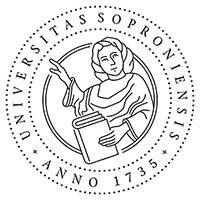DIGIDEUTSCH – German Digital Study Material for Primary School Pupils
DOI:
https://doi.org/10.17165/TP.2016.3-4.5Abstract
The German Department for Linguistics and Literature at the University of Miskolc has developed a new digital study material for primary school children who study German at a beginner level. This study is about the conception of the study material. We describe our methodological theories and we point out the two most important elements which make our study material different from other digital, interactive or online study materials. 1. support of students with learning difficulties in language learning, 2. scopes of learning German as a second language.
References
Benedek, A. (szerk.) (2013). Digitális pedagógia 2.0. Budapest: Typotex.
Szabó, E. M. (2013). A laterna magicától az okostelefonig. Az online nyelvtanulás és nyelvtanítás egy lehetséges modellje. In: Benedek, A. (szerk.): Digitális pedagógia 2.0. Budapest: Typotex.
Az 51/2012. (XII. 21.) számú EMMI rendelet 2. melléklete, Kerettanterv az általános iskola 5-8. évfolyamára, letölthető az Oktatáskutató és Fejlesztő Intézet honlapjáról: http://kerettanterv.ofi.hu/02_melleklet_5-8/index_alt_isk_felso.html
Downloads
Published
Issue
Section
License
Copyright (c) 2016 Bikics Gabriella, Kegyes Erika

This work is licensed under a Creative Commons Attribution-NonCommercial-NoDerivatives 4.0 International License.












